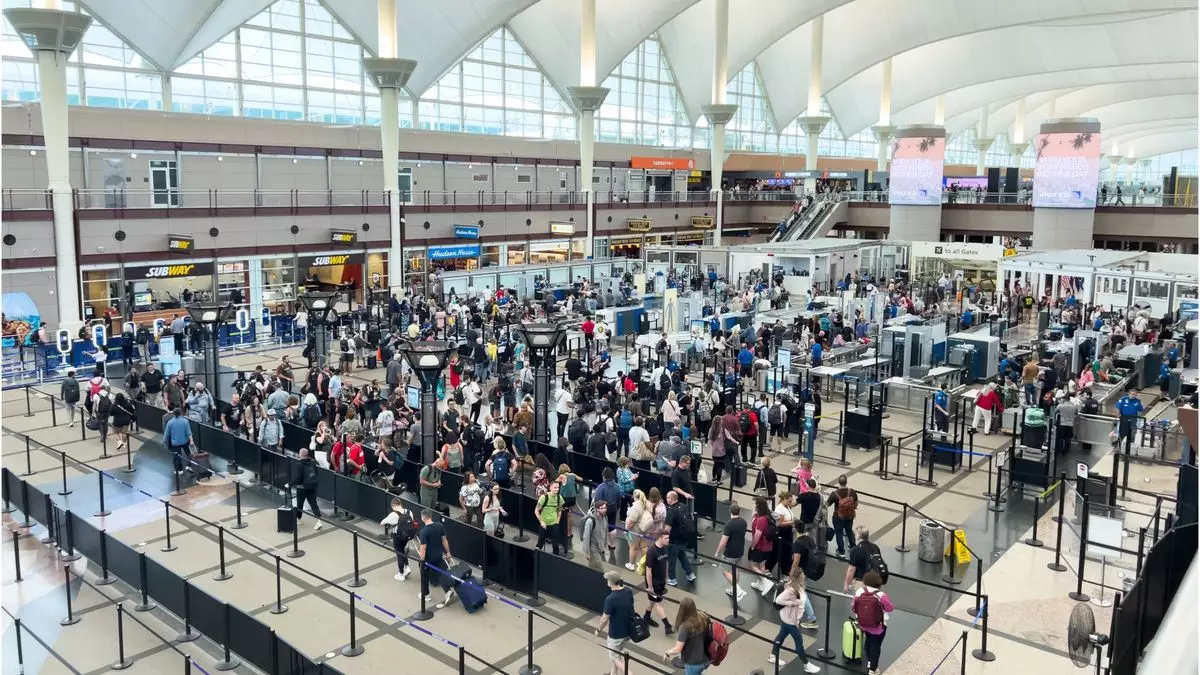In a move that is shaking up the aviation security landscape, the Department of Homeland Security (DHS) announced the termination of the collective bargaining agreement with the Transportation Security Administration (TSA). This decision has raised eyebrows, as it points to a significant pivot in the way airport security personnel are managed and evaluated. By ending this agreement, the DHS is ostensibly aiming to bolster the performance of the TSA’s workforce, which comprises around 50,000 transportation security officers who play a crucial role in safeguarding travelers by screening for weapons and explosives.
The DHS justifies its bold decision by claiming that the existing union framework allows for underperformers to remain on the job, ultimately jeopardizing public safety. However, this assertion invites skepticism. It risks glossing over the essential contributions that TSA employees have made in the face of challenging work conditions. Instead of addressing individual performance issues through rigorous oversight and support, the DHS appears to choose a more confrontational approach that could alienate a significant part of the workforce.
The Political Ramifications
This policy shift does not occur in a vacuum; it comes on the heels of a series of politically charged actions following the transition to the Biden administration. Immediately after being sworn in, President Biden removed TSA Administrator David Pekoske, leaving the agency without leadership amid an ongoing national health crisis that demands cohesion and collaboration. Such a power vacuum can create confusion and diminish the morale among TSA employees—who, until recently, were applauded for their pivotal role in ensuring airline safety.
Congressional voices, particularly from Democratic lawmakers like Rep. Bennie Thompson, have vehemently opposed this move. Thompson argues that diminishing the collective bargaining rights of TSA workers not only undermines morale but also risks a significant drop in workforce effectiveness. He notes that TSA’s attrition rates fell after recent pay increases and contract improvements, suggesting that a supportive environment yields better results than a punitive one. This insight should be at the forefront of discussions about workforce management in the risky and sensitive domain of airport security.
Union Busting or Efficiency Improvement?
Critics have framed the DHS’s actions as potential union-busting tactics under the guise of reforming inefficiencies. The situation raises important questions about the true intentions behind this abrupt change. The agency claims it seeks to create a more effective and modernized workplace, yet this inclination can often backfire. Morale dips, increased attrition risks, and decreased public trust could all emerge from a combative relationship between the agency and its frontline employees.
Moreover, the implications of the DHS’s actions can extend beyond labor relations. The specter of privatization looms large, particularly with the connection to “Project 2025,” which advocates for dismantling the TSA union altogether. Stripping public sector agencies of their union protections not only puts thousands of jobs at risk but also raises ethical concerns surrounding the quality of security services that would eventually replace them. Privatization might provide short-term gains but could significantly undermine the safety standards that the TSA currently upholds.
In times of heightened security risks and public health challenges, the focus should remain on empowering those who provide essential services while maintaining public safety. The Department of Homeland Security’s decision to end the TSA’s collective bargaining agreement may herald a new era for aviation security—one that deserves a more nuanced and thorough public discourse on its broader implications.


Leave a Reply